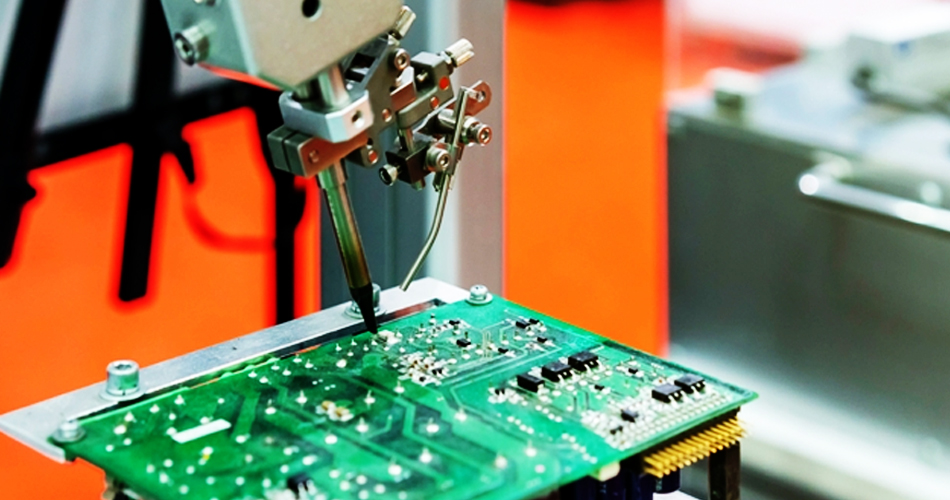- English
- Español
- Português
- русский
- Français
- 日本語
- Deutsch
- tiếng Việt
- Italiano
- Nederlands
- ภาษาไทย
- Polski
- 한국어
- Svenska
- magyar
- Malay
- বাংলা ভাষার
- Dansk
- Suomi
- हिन्दी
- Pilipino
- Türkçe
- Gaeilge
- العربية
- Indonesia
- Norsk
- تمل
- český
- ελληνικά
- український
- Javanese
- فارسی
- தமிழ்
- తెలుగు
- नेपाली
- Burmese
- български
- ລາວ
- Latine
- Қазақша
- Euskal
- Azərbaycan
- Slovenský jazyk
- Македонски
- Lietuvos
- Eesti Keel
- Română
- Slovenski
- मराठी
- Srpski језик
Industrial Robots and Automation Integration in PCBA Assembly
In PCBA assembly, industrial robots and automation integration can significantly improve production efficiency, reduce costs, improve quality, and reduce the occurrence of human errors. Here is key information about the use of industrial robots and automation integration in PCBA assembly:

Application of industrial robots in PCBA assembly:
1. Component loading: Industrial robots can be used to accurately load electronic components (such as chips, capacitors, resistors) onto printed circuit boards. The robot's high precision and repeatability ensure correct component positioning, reducing the risk of component damage and incorrect assembly.
2. Welding: Automated welding robots can be used for surface mount technology (SMT) welding and through-hole technology (THT) welding. They enable high-speed, high-precision welding operations, improving weld quality and consistency.
3. Labeling and marking: Robots can be used to automatically apply labels, markings and barcodes to track and identify different circuit boards and components.
4. Inspection and testing: Robots can be used for automated inspection and testing, including visual inspection, functional testing and electrical testing. This helps improve product quality and reduce human errors.
5. Assembling and tightening screws: Industrial robots can accurately assemble and tighten screws, nuts and other fixed components to ensure the reliability of assembly.
Automation integration:
1. PLC (Programmable Logic Controller): PLC can be used to control and coordinate various automated workstations and robots to ensure smooth production processes.
2. Vision system: Vision system can be used to detect and identify electronic components, printing quality, connection problems, etc. to ensure quality control.
3. Transmission system: The automated transmission system can transmit PCBA from one workstation to another to achieve efficient assembly line production.
4. Data collection and monitoring: The integrated data collection system can monitor the production process in real time, collect key performance data, and help with production optimization and problem troubleshooting.
5. MES (Manufacturing Execution System): MES system can be used for production planning, resource management, quality management and traceability to improve production efficiency and traceability.
6. Automated fixtures and tooling: Automated fixtures and tooling can be used to fix and position PCBA to ensure precise assembly.
The key to automation integration is to effectively connect and coordinate various automation components and systems to achieve efficient PCBA assembly. This requires precise engineering, programming and configuration. With the development of technology, PCBA manufacturing industry is increasingly leaning towards automation to improve production efficiency, quality and consistency.
Send Inquiry
-
Delivery Service






-
Payment Options









